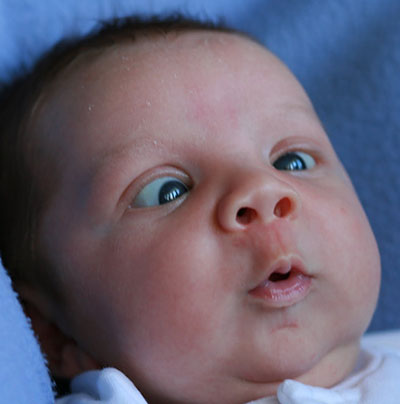Vision is our most important sense, with the help of the eyes we perceive up to 90% of information in the form of light, color, shapes, contrast or depth. With the help of vision, the speech and thinking continue to evolve.
However, 4-6% of children have a vision problem, most often as early as the early age of 2-4 years, possibly even of the 6th month after birth.
What is strabismus?
Squint or strabismus is a disorder of the parallel position of eyeballs. The name comes from the Greek word “strabismos”, which literally means “squinting, skewed or obliquely looking at something”. In medical terminology, the term “heterotropia” or “tropia” is also used.

6 eye muscles ensure the parallel position of the eyes and, by their cooperation, perfect alignment of the eyes in movements in all directions. There is also a disorder in the movement of the muscles, which inflicts the development of squint caused by a damage of the nerves that are carried by these muscles.
There may be a situation with strabismus or other disease, where a blurry image hits the retina, which causes the child not to see the image from the inferior sighted eye and therefore does not perceive it. If this condition lasts for a long time, there is a decrease in visual acuity, and amblyopia is formed, also called blunt vision. Fortunately, it is usually possible to adjust it with an appropriate treatment. However, when amblyopia is not treated until the age of 8, visual impairment becomes permanent. Therefore, it is important to diagnose strabismus and amblyopia by an optician as soon as possible.
We recognize two forms of squint, manifest – visible (permanent) and latent, which is visible only occasionally and can occur during illness, examination, fatigue, etc. It is further divided according to several criteria, such as deviation type, ‘concurrency’ or laterality (where only one eye is squinting or the eyes shift). One or both of the kid´s eyes can turn inwards (esotropia), outwards (exotropia), upwards (hypertropia) or downwards (hypotropia).
How to identify and cure strabismus in kids?

To set the correct diagnosis, a complex examination of the child is necessary, when the ophthalmologist examines the visual acuity, the position of the eyes and possibly conducts other ophthalmological examinations. A complete strabological examination is the basis for assessing the type of strabismus and for the follow-up and determination of treatment. A machine called a synoptophore helps with this assessment.
In the treatment of strabismus, it is important to determine the right correction and its wearing. Success depends clearly on the cooperation of parents and the child. This is usually a correction by glasses that completely or partially removes the deviation and achieves a parallel position of the eyes.

In case a part of the deviation remains after the complete tuning, the next step is taken – surgical treatment of the patient. The aim of the surgical solution of strabismus is to achieve a parallel position of the eyes to the distance and close, thus allowing a simple sight. The age at which we approach the surgery depends on the type of strabismus and its development and previous treatment of the patient. However, the operation of strabismus does not finish the treatment, the patient is subsequently long-term monitored by an ophthalmologist.
How can we help a child with strabismus at home?
The ideal situation occurs when the child has the opportunity to visit an orthoptist. However, meetings can be a burden on the family budget, so parents are trying other ways. One such way is to apply in a tablet. After consulting with an orthoptist or ophthalmologist, parents can download a program to the tablet that helps children train sick eyes through play. We are talking about an application that simulates an electromechanical CAM device, one of the most used devices in the treatment of amblyopia. The ANNA system is easy to use and use and is still available on trips or stays away from home.
Do not neglect the care of your eyes or the eyes of your children, and if you have any suspicions, undergo an examination by an optician.
Author: MUDr. Marianna Bryndzová
Source of main image: Http://drcormosofta.ro/strabismul/



